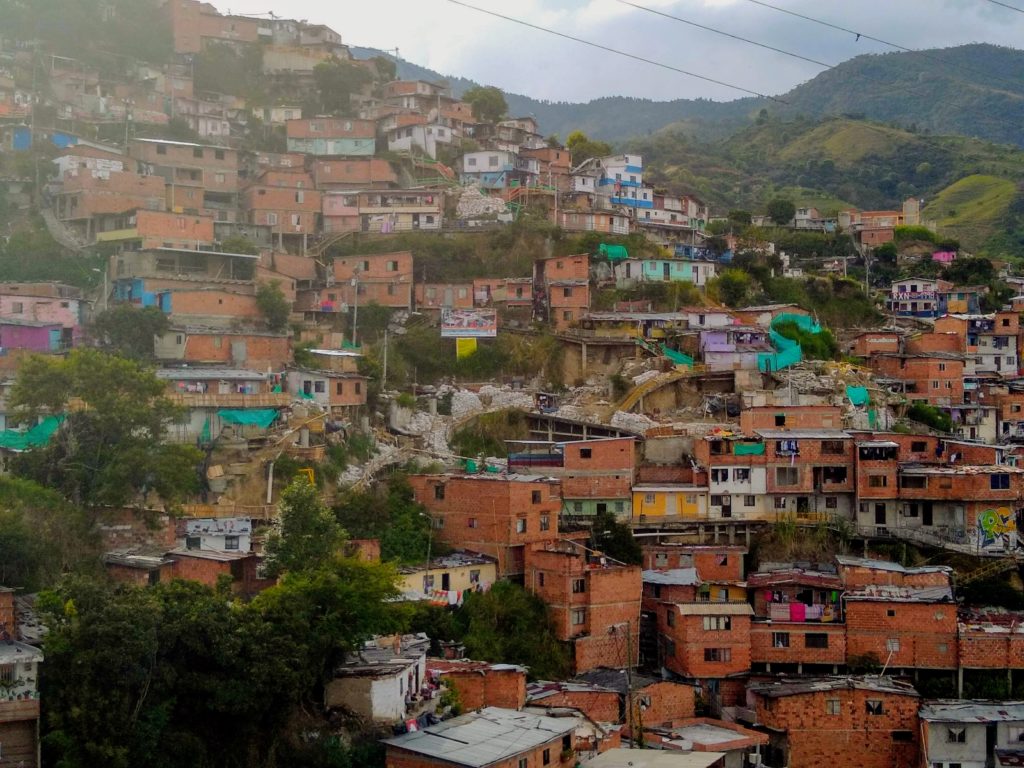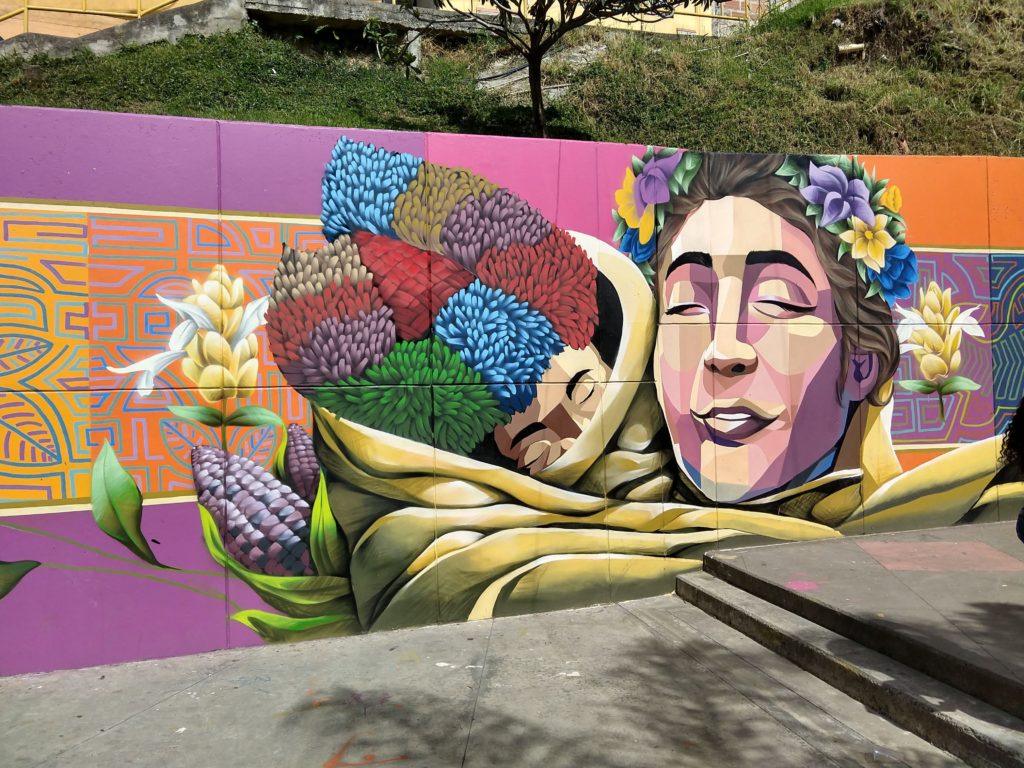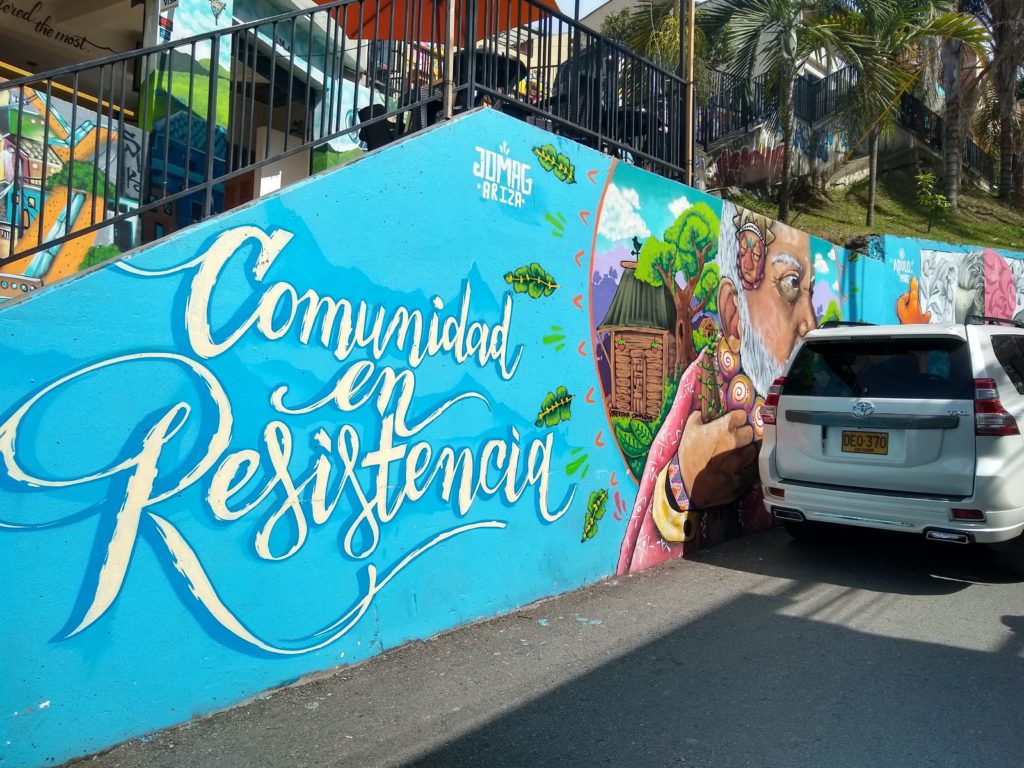In 1993, Medellin, Colombia was the murder capital of the world with 420 murders per hundred thousand people. In the worst section of Medellin, Comuna 13, the murder rate was twice as high. Today, Comuna 13 is a vibrant, lively, and safer community, as well as one of the top tourist locations in town. The comuna’s transformation is an example of how communities solve seemingly impossible, intractable problems.
Violent crime in Colombia and other parts of South and Central American is fueled largely by our first world thirst for cocaine. As the drug trade became increasingly centralized in the 1980s, much of Medellin fell under the control of drug kingpin Pablo Escobar. Of the 16 Comunas (districts) of Medellin, Comuna 13’s location was key, as it enabled control of the San Juan Highway by which cocaine moved out of the city and guns moved in.

Comuna 13 was built by squatters on the steep hillsides to the west of Medellin in the 1960s and 70s, in an area with no city services: no running water, sewer, garbage collection, electric service, or roads. And no police.
As Escobar’s gangs consolidated their control of the area, they provided the residents with food and some protection against other gangs’ activities. To inhibit government interference, gang members killed locals who were guilty of, or even accused of, such activities as: being out after curfew, stealing, or associating with the government. This last infraction was particularly hard to avoid since young Colombian men have mandatory military service. This meant they were forced to either join a gang or join government forces and risk being killed along with their family.
When Escobar was finally shot and killed in 1993, violence increased further as rival gangs fought to fill the power vacuum.
In the early 2000s, president Alvaro Uribe Velez cracked down on gang activity in Comuna 13 with the infamous Orion raids. In the final raid, 1,500 police and an unknown number of paramilitary members – backed up by two helicopters, mortars, and a tank – assaulted the Comuna. The gangs lost innumerable members and hundreds of bystanders were killed or injured in the street battles.
As always, nature abhors a vacuum and this time it was the paramilitary groups who took control of Comuna 13. Many of these vigilante groups still worked the drug trade, though this time the money supposedly financed community protection rather than drug lord lifestyles. But even with the drug money, gangs extorted protection payments from local residents, businesses and bus drivers.
In 2006, Medellin Mayor Sergio Fajardo tried a different approach. Rather than primarily killing or forcing out the gang members, his administration instead focused on social justice and economic reforms: jobs for peace, better schools, libraries, brick homes to replace the wooden shacks, legal property titles for squatters, and infrastructure improvements including the world’s first free public escalator system. Before this last improvement, food, fuel, building materials, and everything else had to be manually carried up steep, poorly maintained staircases. The infrastructure improvements connected the Comuna’s neighborhoods with each other and to the rest of the city.
At the same time, young people who had grown up seeing dead neighbors or parts of neighbors in the streets began to use rap and hip-hop to protest gang violence. They continued making music even as the gangs murdered their fellow musicians and drove others away. Also during this period, muralists began to cover walls with enormous scenes of resistance and hope. Entrepreneurial development centers, called cedezos, were set up to provide cheap loans to locals who wanted to open businesses.

As Rebecca Solnit wrote in Hope in the Dark: “Making an injury visible and public is often the first step in remedying it, and political change often follows culture, as what was long tolerated is seen to be intolerable, or what was overlooked becomes obvious. Which means that every conflict is in part a battle over the story we tell, or who tells and who is heard.”
For Comuna 13 it was the courage, pride, and persistence of the community, supported by progressive government programs, that enabled members to counter the myths of cynicism and despair with stories of activism and hope. Colombia, Medellin, and Comuna 13 still face enormous problems, but they have proved that change happens first in the imagination, and that despair is not only self defeating, but unrealistic.

If you’re in Medellin and are interested in a tour of Comuna 13, see these guys.
